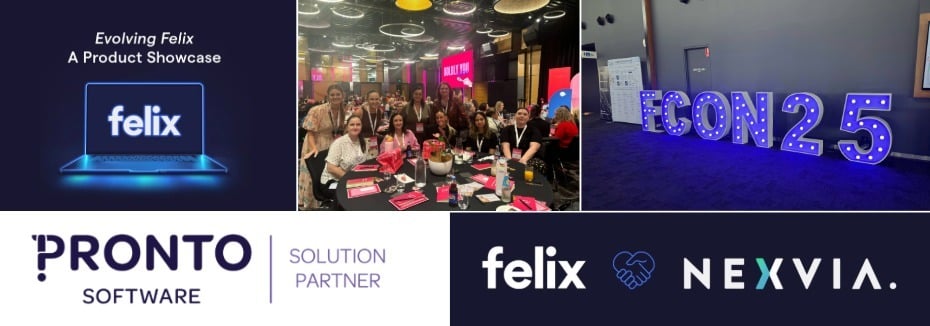Ever since its passing by the Australian Government in late 2018, the Modern Slavery Act has been a key area of focus at procurement conferences and trade shows across Australia. However, while it is often on the agenda, the nuances of this complex act remains a mystery to many.
In late March 2019, the government released a draft guide to answer some of the key questions that have emerged following the release of the act. One major focus of this guide is to provide reporting entities with some clarity around working with their vendors to assess risk areas relating to modern slavery within their supply chain. This blog provides an overview of this section of the guide, with some helpful tips of our own.
But first, a summary of the act itself.
What is this act all about?
Australia’s Modern Slavery Act 2018 is the first national legislation in the world that defines modern slavery. According to the act, modern slavery is an act of serious exploitation which includes human trafficking, slavery, servitude, forced marriage, forced labour, debt bondage, child labour, and deceptive recruiting for work or services.
The act requires any business that has a consolidated annual revenue of at least A$100 million to publish an annual statement to declare that they are taking steps to assess and address all risks of modern slavery within their supply chains. This requirement applies to both Australian entities AND foreign entities conducting business in Australia during the applicable reporting period. Penalties have been put in place to punish entities that fail to comply. Businesses that do not meet the above requirements are not required to report, but are able to do so voluntarily.
Any supply chain could be vulnerable to, or could be, unintentionally promoting modern slavery activities, which is why companies must take necessary precautions to ensure that their entity is not at risk.
Ways to proactively reduce your risks
According to the Department of Home Affairs’ Draft Guidance for Reporting Entities, companies must work closely with their vendors to efficiently assess and address any modern slavery risks.
To achieve this, they recommend following these three principles:
1- Build meaningful partnerships with your vendors
First and foremost, this guide communicates the importance of reporting entities and vendors working together and sharing the responsibility for assessing and addressing modern slavery risks within their shared supply chain. An entity’s focus should not be on policing their vendors for modern slavery offences, but rather on helping them avoid committing such offences in the first place.
Your organisation can help vendors within your supply chain by providing them with training and raising general awareness as vendors may have varying levels of understanding of their modern slavery risks. Furthermore, your vendors are likely having to provide compliance information to multiple reporting entities, so make the process easier for them by being clear and transparent about your compliance expectations from the get go (always outline it in your contracts), and provide them with straightforward compliance documentation submission paths.
It’s also important to make the process simple and straightforward for relevant teams within your own entity. It’s likely that you already follow certain vendor management processes that you can adjust to address modern slavery related compliance as well. For example, you could revise existing Prequalification questionnaires to include modern slavery questions.
2 - Ensure your engagement with vendors is risk-based
A blanket approach to all your vendors may not be appropriate, especially when dealing with vendors of varying risk levels. You should therefore strive to first understand the risk-profile of each of your vendors, and then tailor the approach to them accordingly. For instance, the level of documentation you request from a low-risk vendor during their Prequalification may not be as extensive as what you request from a high-risk vendor.
3 - Recognise the leverage that you and your vendors have to influence change
All organisations in the supply chain must recognise their role in preventing modern slavery. Vendors that operate at ‘control points’ in your supply chain have greater visibility of other vendors further down the supply chain. These vendors therefore have greater responsibility to identify modern slavery risks beyond their own.
You must identify these vendors, and engage with them to leverage their visibility. Furthermore, you must consider that your own entity may be inadvertently exposing your vendors to modern slavery risks by, for example, asking them to meet unrealistic requirements (pricing, deadlines, etc.).
Simplify your compliance processes with Felix
From this guide it is evident that there are simple steps your organisation can take immediately in order to ensure that the risks of modern slavery within your supply chain are mitigated. It is also clear that working with your vendors, rather than against them, and making the process easy and seamless for them will ultimately help you reduce those risks.
Felix’s Enterprise-ready procurement platform allows you to do so by providing you and your vendors with all of the tools required to easily capture, assess, and monitor modern slavery risk levels:
Prequalification Questionnaires
Felix’s detailed Prequalification questionnaires allow you to use each vendor’s risk profile to collect more data using dynamic question categories and form fields. You can easily revise your existing questionnaires to include modern slavery-related questions, and create conditional questions within your questionnaire (where the appearance of a question is dependent on the vendor’s response to a previous question). This allows you to first classify a vendor as low or high risk in terms of their modern slavery activities, and then based on their classification, request further information or documentation.
Alternatively, you could also group vendors to different risk levels based on their unique goods and services offered and then assign specific questions within the questionnaire to those different categories of supply. This enables you to ask specific questions and/or request specific documentation based on a vendor’s identified risk level.
Tailoring your Prequalification questionnaires to your vendors based on their risk level makes it not only easier to complete your evaluations, but also simplifies the process for the vendors themselves, who likely have to repeat the Prequalification process for each organisation they choose to work with.
Vendor Tags
Felix makes it easy to differentiate compliant and non-compliant vendors. During the onboarding and Prequalification stages, you can request that vendors submit information and documentation to prove that they are not involved in modern slavery practices. You can then mark each vendor in Felix using custom tags - labels communicating unique business attributes - to signal their compliance, or lack of, with regards to that specific area. Alternatively, this information can also be requested during the sourcing stage as a non-financial requirement within an RFx.
Contact us today to find out more about how Felix can help you identify and manage modern slavery risks within your supply chain.
Source: Australian Government - Department of Home Affairs
Recent Articles
2025 in review: Milestones, insights and achievements
2025 – a year of that brought meaningful developments for Felix as we continue to address the evolving needs of organisations navigating complex supply-chain environments.
Top 10 reasons for a centralised vendor database
As organisations grow, so does the complexity of managing vendor relationships. Many still rely on spreadsheets or siloed systems, which can lead to inefficiencies, data inconsistencies, and compliance risks. A centralised vendor database offers a smarter, more scalable solution that brings structure, visibility, and control to procurement operations.
Here are the top 10 reasons why centralising your vendor data is a strategic move.
Five ways poor contract storage could be costing your organisation money
Contracts are the backbone of every business relationship – legally binding documents that define expectations, responsibilities, and value.
But what if the way your organisation stores those contracts is quietly costing you money?
Let's stay in touch
Get the monthly dose of supply chain, procurement and technology insights with the Felix newsletter.






